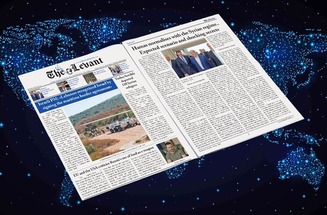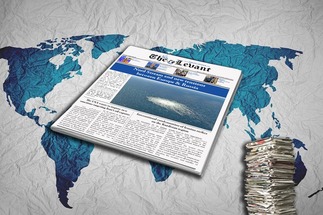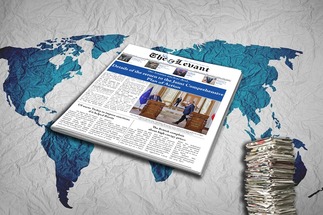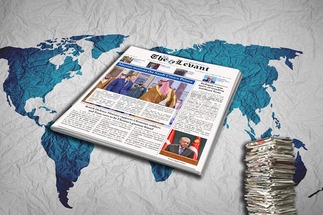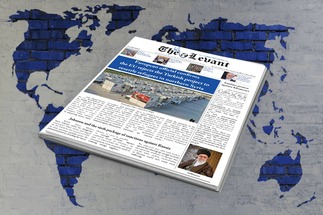-
Iranian Regime’s Budget Deficit Reaches 1000 Trillion Tomans!
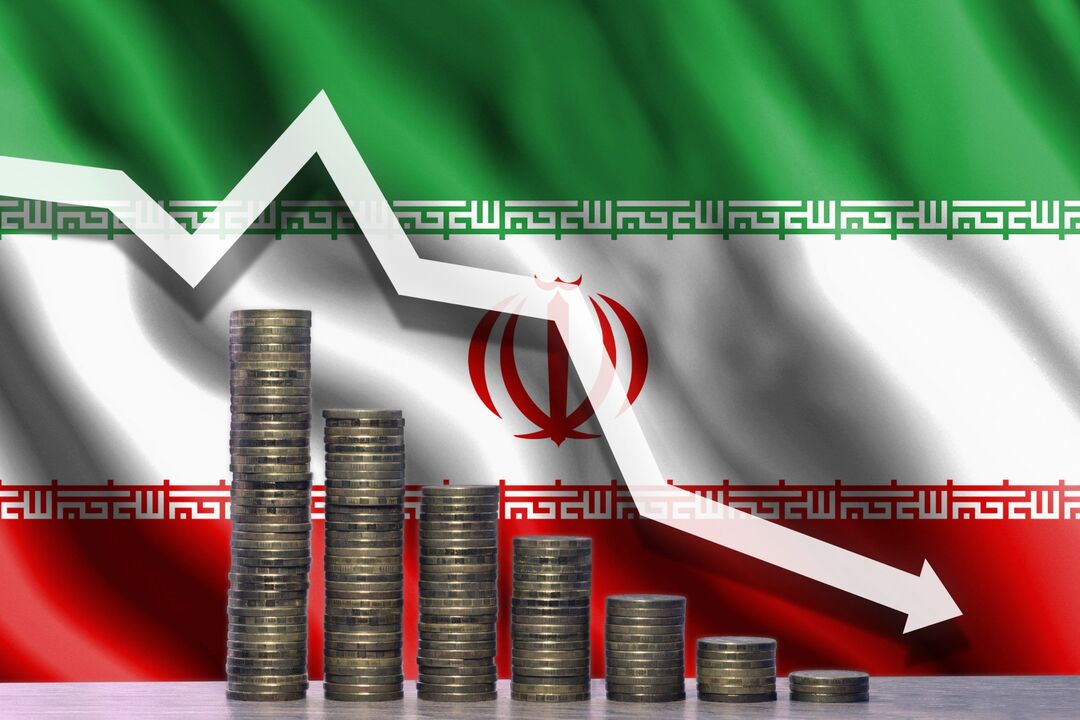
On Sunday, October 22, the Iranian regime's president, Bezhakian, presented the budget bill for the upcoming year to the parliament. While presenting it, he touched on some aspects of the budget but ignored its central feature: the massive deficit amounting to 1000 trillion tomans.
Two days earlier, on October 20, during the “Export Conference,” Bezhakian referred to the “budget imbalance” without specifying the figure, lamenting, “We inherited a government burdened with imbalances in banks and funds... and we are trying to hide this truth.” Nevertheless, he repeated the same approach when presenting the budget bill, attempting to cover up this enormous deficit. However, it is impossible to conceal such a huge shortfall due to its significant size, which economists describe as “one of the main challenges facing the Iranian economy” and that it is “in continuous rise” (Arman Emruz newspaper, October 21).
In this context, Minister of Economy Hemmati announced that the deficit reached 850 trillion tomans, but the real figure is much higher. The official newspaper “Jahan Sanat” (October 21) clarified that “when combining the allocated expenses for subsidies with the state budget, the government budget deficit exceeds 40 percent.” Meanwhile, “Arman Emruz” (October 14) described the real deficit as “1.5 trillion tomans of debt and 600 trillion tomans as a deficit.”
On October 23, the newspaper “Farhikhtegan” revealed that the actual deficit is 80 percent larger, noting that “the operating balance for the year 1404, accounting for off-budget items and those allocated for subsidies, shows a deficit of 1805 trillion tomans.”
Simply put, the government borrows from the banking system to balance its income and expenses and cover its financial deficit. In an attempt to bridge this shortfall, banks resort to increasing the printing of money, leading to a liquidity inflation of 9000 trillion tomans, which has exhausted all the energy and strength of the Iranian people. Simultaneously, the government is forced to borrow again from the central bank and the banking system to control the effects of inflation (Arman Emruz, October 22). This vicious cycle continues to plunge the country deeper into economic insolvency.
This destructive cycle is not spontaneous; it is driven by the interests of the ruling mafia. Official newspapers acknowledge: “One of the main reasons for the imbalance in the banks is the granting of unproductive and inefficient loans. Banks have provided loans to companies and projects to support certain sectors (read: power gangs) or due to political and economic pressures, which did not yield any economic returns and, in many cases, were unable to repay the loans.” This has led to the accumulation of non-collectible assets in banks, causing financial imbalances that forced them to borrow again from the central bank, resulting in increased inflation and worsening government debt.
Thus, it is clear once again that the enormous financial deficit, amounting to 40% of the budget, is a direct result of the corrupt structure of the ruling regime, headed by Khamenei, which represents the “seven-headed dragon of corruption.” This corruption continues to crush over 80 million Iranian citizens under its weight. There is no economic solution to this ongoing catastrophe. The only way to escape this destructive cycle is through political change, by overthrowing the current regime and establishing a democratic popular government.
You May Also Like
Popular Posts
Caricature
BENEFIT AGM approves 10%...
- March 27, 2025
BENEFIT, the Kingdom’s innovator and leading company in Fintech and electronic financial transactions service, held its Annual General Meeting (AGM) at the company’s headquarters in the Seef District.
During the meeting, shareholders approved all items listed on the agenda, including the ratification of the minutes of the previous AGM held on 26 March 2024. The session reviewed and approved the Board’s Annual Report on the company’s activities and financial performance for the fiscal year ended 31 December 2024, and the shareholders expressed their satisfaction with the company’s operational and financial results during the reporting period.
The meeting also reviewed the Independent External Auditor’s Report on the company’s consolidated financial statements for the year ended 31 December 2024. Subsequently, the shareholders approved the audited financial statements for the fiscal year. Based on the Board’s recommendation, the shareholders approved the distribution of a cash dividend equivalent to 10% of the paid-up share capital.
Furthermore, the shareholders endorsed the allocation of a total amount of BD 172,500 as remuneration to the members of the Board for the year ended 31 December 2024, subject to prior clearance by related authorities.
The extension of the current composition of the Board was approved, which includes ten members and one CBB observer, for a further six-month term, expiring in September 2025, pending no objection from the CBB.
The meeting reviewed and approved the Corporate Governance Report for 2024, which affirmed the company’s full compliance with the corporate governance directives issued by the CBB and other applicable regulatory frameworks. The AGM absolved the Board Members of liability for any of their actions during the year ending on 31st December 2024, in accordance with the Commercial Companies Law.
In alignment with regulatory requirements, the session approved the reappointment of Ernst & Young (EY) as the company’s External Auditors for the fiscal year 2025, covering both the parent company and its subsidiaries—Sinnad and Bahrain FinTech Bay. The Board was authorised to determine the external auditors’ professional fees, subject to approval from the CBB, and the meeting concluded with a discussion of any additional issues as per Article (207) of the Commercial Companies Law.
Speaking on the company’s performance, Mr. Mohamed Al Bastaki, Chairman BENEFIT , stated: “In terms of the financial results for 2024, I am pleased to say that the year gone by has also been proved to be a success in delivering tangible results. Growth rate for 2024 was 19 per cent. Revenue for the year was BD 17 M (US$ 45.3 Million) and net profit was 2 Million ($ 5.3 Million).
Mr. Al Bastaki also announced that the Board had formally adopted a new three-year strategic roadmap to commence in 2025. The strategy encompasses a phased international expansion, optimisation of internal operations, enhanced revenue diversification, long-term sustainability initiatives, and the advancement of innovation and digital transformation initiatives across all service lines.
“I extend my sincere appreciation to the CBB for its continued support of BENEFIT and its pivotal role in fostering a stable and progressive regulatory environment for the Kingdom’s banking and financial sector—an environment that has significantly reinforced Bahrain’s standing as a leading financial hub in the region,” said Mr. Al Bastaki. “I would also like to thank our partner banks and valued customers for their trust, and our shareholders for their ongoing encouragement. The achievements of 2024 set a strong precedent, and I am confident they will serve as a foundation for yet another successful and impactful year ahead.”
Chief Executive of BENEFIT; Mr. Abdulwahed AlJanahi commented, “The year 2024 represented another pivotal chapter in BENEFIT ’s evolution. We achieved substantial progress in advancing our digital strategy across multiple sectors, while reinforcing our long-term commitment to the development of Bahrain’s financial services and payments landscape. Throughout the year, we remained firmly aligned with our objective of delivering measurable value to our shareholders, strategic partners, and customers. At the same time, we continued to play an active role in enabling Bahrain’s digital economy by introducing innovative solutions and service enhancements that directly address market needs and future opportunities.”
Mr. AlJanahi affirmed that BENEFIT has successfully developed a robust and well-integrated payment network that connects individuals and businesses across Bahrain, accelerating the adoption of emerging technologies in the banking and financial services sector and reinforcing Bahrain’s position as a growing fintech hub, and added, “Our achievements of the past year reflect a long-term vision to establish a resilient electronic payment infrastructure that supports the Kingdom’s digital economy. Key developments in 2024 included the implementation of central authentication for open banking via BENEFIT Pay”
Mr. AlJanahi concluded by thanking the Board for its strategic direction, the company’s staff for their continued dedication, and the Central Bank of Bahrain, member banks, and shareholders for their valuable partnership and confidence in the company’s long-term vision.
opinion
Report
ads
Newsletter
Subscribe to our mailing list to get the new updates!



